SHE DIES TOMORROW (2020)
Amy thinks she's dying tomorrow...and it's contagious.
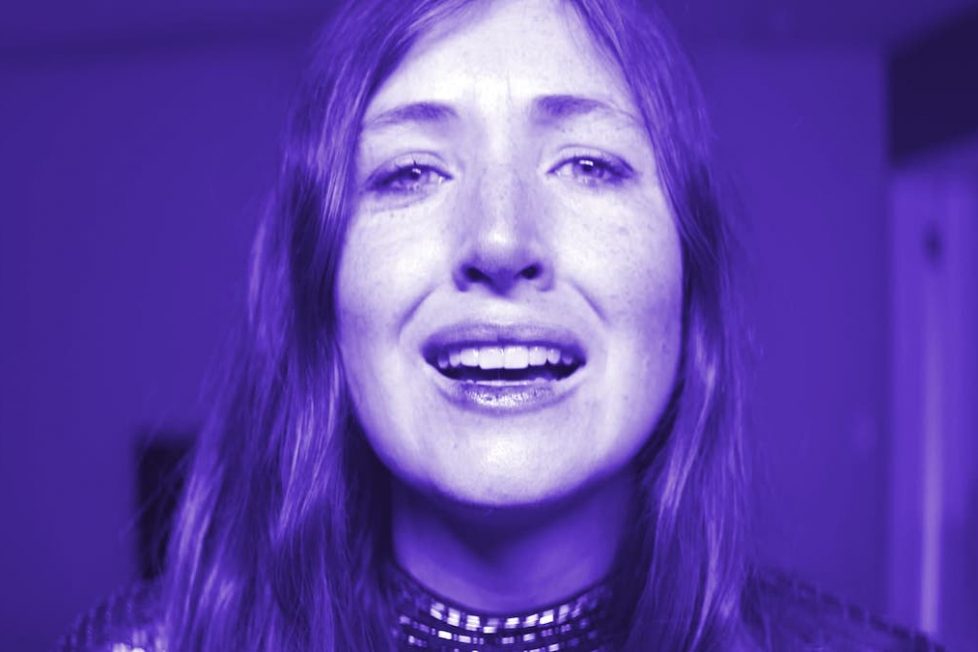
Amy thinks she's dying tomorrow...and it's contagious.


In the summer of 1518, the city of Strasbourg, France, developed an epidemic without warning and precedent. First, it struck just one woman with an intensity causing others nearby to take notice. Soon, several people were under the spell and, unable to break it, were hospitalised. A few reports suggest that some even died from it. Though historians haven’t reached a consensus on the extremity of these cases (or even the cause), one thing is agreed: the sole symptom of the epidemic was dancing.
It’s been described as a ‘dancing plague’, which caused victims to dance fervently and manically, without pause, until local authorities had no choice but to intervene. And though a reason for it’s never been settled upon, a popular theory suggests it was mass hysteria—an affliction of thoughts and fears passed along from one person to another during a time of stress. It’s a theory that brings into question the susceptibility of humans to suggestion. Could we really be so easily influenced that we believe the unbelievable? And does it matter whether it’s the truth if we believe it enough?
Writer-director Amy Seimetz’s intriguing new film, She Dies Tomorrow, asks similar questions but with a different subject. When recovering addict Amy (Kate Lyn Sheil) picks up a quasi thought disease that causes her to insist she has one day left to live, she inadvertently passes it on to her initially sceptical friends and family. It doesn’t take long, or even much convincing for them to be gripped by the belief that they too will die the next day. Much like the aforementioned dancing plague, this idea spreads fast and flies in the face of logic. It causes reckless behaviour and it’s unclear where it comes from or why it occurs… but once it does, it’s unshakeable. There’s no cure for a human-transmitted disease of an idea.
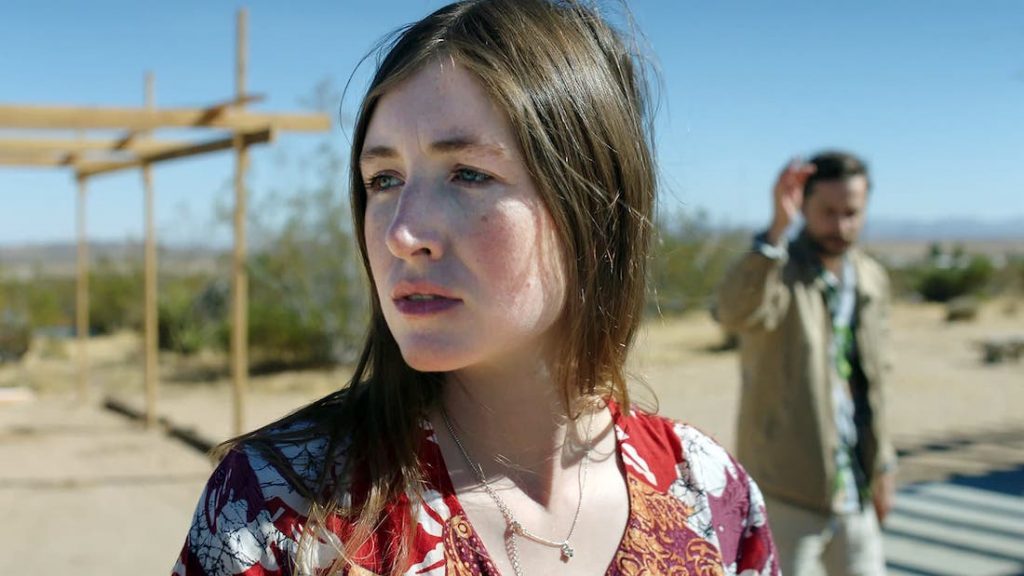
Seimetz’s film is lucid and sharp in concept, while dreamlike and abstract in execution. It’s a hypnotic hybrid; like being in a drunken daze but with a stinging and clear thought underneath it, that sobers you up each time it crosses your mind. Photographed with a visually surrealist flare and non-linear storytelling, the film is challenging but never impenetrable because it maintains an emotional truth at its core.
The first three images of the movie establish an impressionistic but transfixing visual language that Seimetz returns to throughout: an extreme closeup of a terrified eye is followed by a man as seen through a crack in the door, sobbing about something ending while an Angel Olsen track plays from his stereo (sobbing being the appropriate reaction when you’re listening to Angel Olsen). We next see a woman—who turns out to be Amy—bolting upright on her couch, awoken from a horrible dream. Seimetz’s script isn’t one to explain its choices, but the unfolding nature of the film does give visual non-sequiturs a certain weight in retrospect. Even if one doesn’t understand them, one feels them, as if the film is some poison ink being injected into you while you sleep.
We quickly learn Amy has just moved into a large new home, too big for a single person, with abundant dark corners to ponder on a quiet night. Her way of battling the dark is to play Mozart’s “Lacrimosa” on repeat and drink herself stupid. Or perhaps it’s not her way of battling the dark but embracing it. Kate Lyn Sheil plays Amy with the eerie calm of somebody who’s accepted their own death. Like Kirsten Dunst’s phenomenal turn in Melancholia (2011) as a woman who accepts the world is ending, Sheil’s Amy is resigned and defeated, a woman in a fugue state no longer trying to fight or disprove what she knows: she is going to die tomorrow.
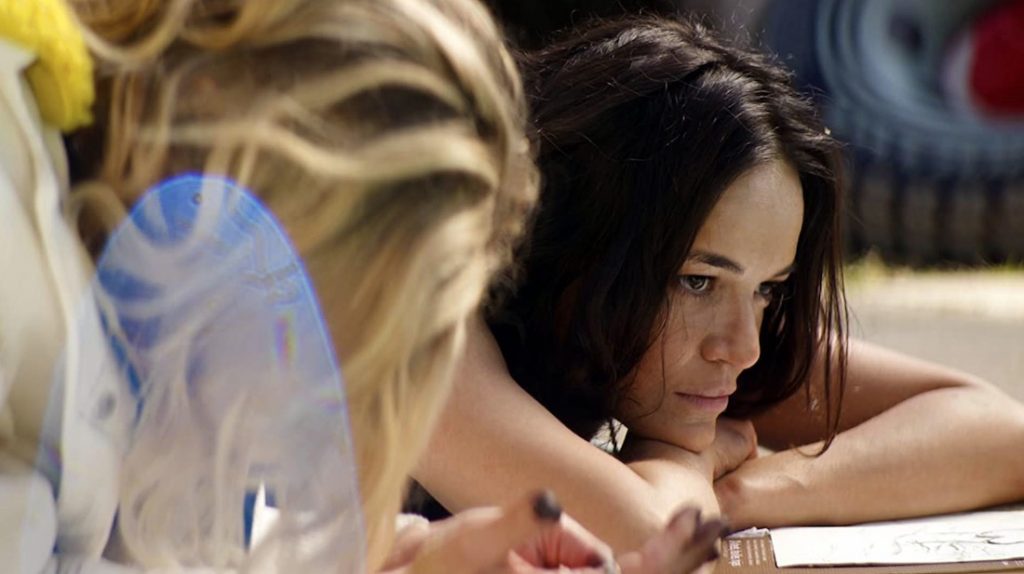
“Lacrimosa” (which means ‘weeping’ in Latin) is a recurring piece of music in the film; an audio cue that, along with the unnatural flashing lights that Amy encounters in her home, suggests something is extremely wrong. A haunting piece of music is transformed into the fanfare of the apocalypse. Amy’s best friend Jane (Jane Adams) asks the questions this film establishes: how does she know she’s going to die tomorrow? Why does she believe this? But Amy, and by extension Seimetz’s, answer is as troubling as it gets: Amy just knows. It’s something she can sense—when Jane starts feeling the same way, she describes it as the feeling you get before a cold. You don’t know how to explain it, you can just feel it coming.
It’s an effective demonstration of how anxiety can take hold. Yes, you can argue with yourself, disproving each worry with rational thought… but this isn’t rational thought. This is a belief. It’s when anxiety calcifies into something harder to remove because it’s attached itself to your bones and become a part of you. There’s little point trying to prove or disprove Amy because, to her, it’s the truth: she is going to die tomorrow. You cannot argue rationally with something as irrational as death.
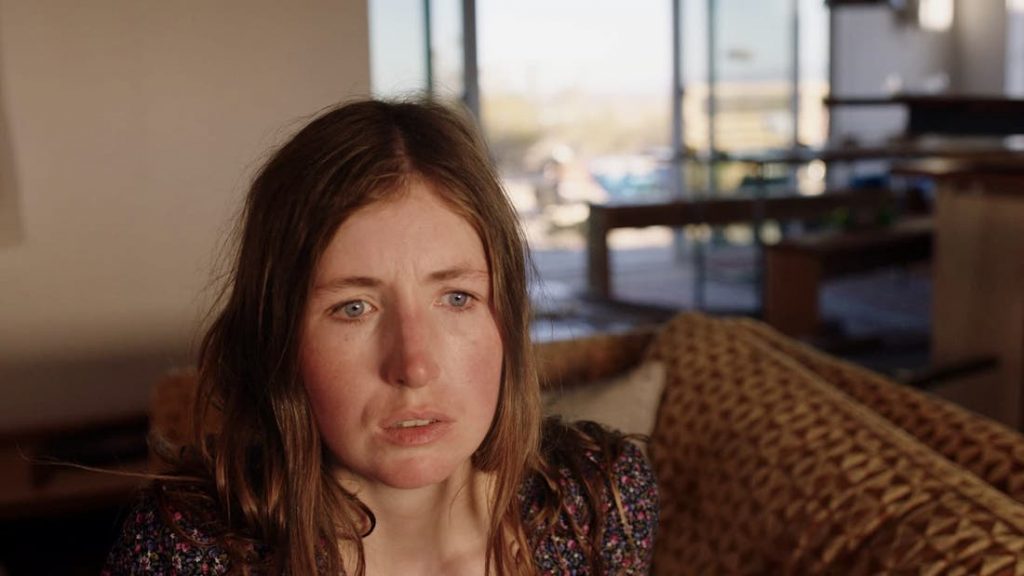
What imbues She Dies Tomorrow with tension is that we begin to believe Amy, just as her friends and family do! When Jane returns home from visiting Amy, she hears snippets of “Lacrimosa” and distant, alien voices, transmitted through thin air. Red and blue lights flash ominously in her basement. The thought has been passed on and has taken hold. Jane believes that she will die tomorrow, too.
Seimetz cleverly places at the core of the film a hypothetical that can’t be solved. There’s every chance that Amy, or Jane, or Jane’s brother Jason (Chris Messina), or anybody watching the film could die tomorrow. It’s a realisation that can keep one up at night, that can shake you out of your daily routine and take the breath out of you. In Charlie Kaufman’s Synecdoche, New York (2008), a character says of people that we live “each knowing we’re going to die. Each of us secretly believing we won’t”. In She Dies Tomorrow, we see the moment of realisation, again and again. Perhaps it’s tomorrow because the moment you’re reminded of your own mortality, it’s so unfathomable that it may as well happen tomorrow. Why not tomorrow?
On paper, it sounds heavy… but the film has a brilliantly self-aware sense of humour. Before she dies, Amy decides she wants to ride dune buggies. When told she has to wear a helmet, she responds by telling the man renting the buggies (played by You’re Next director Adam Wingard) about her situation, and his reaction is possibly the funniest and longest ‘uhhh’ in recent cinema. Seimetz also finds the humour in how absurd the behaviour is to those not experiencing it. When Jason and his wife Susan (Katie Aselton) are struck with the affliction after a visit from Jane, they creep into their teenage daughter’s bedroom, cradling her while sobbing. The moment isn’t as meaningful to their daughter. “Are you drunk?”, she asks. “Yes, a little bit”, sobs Susan.
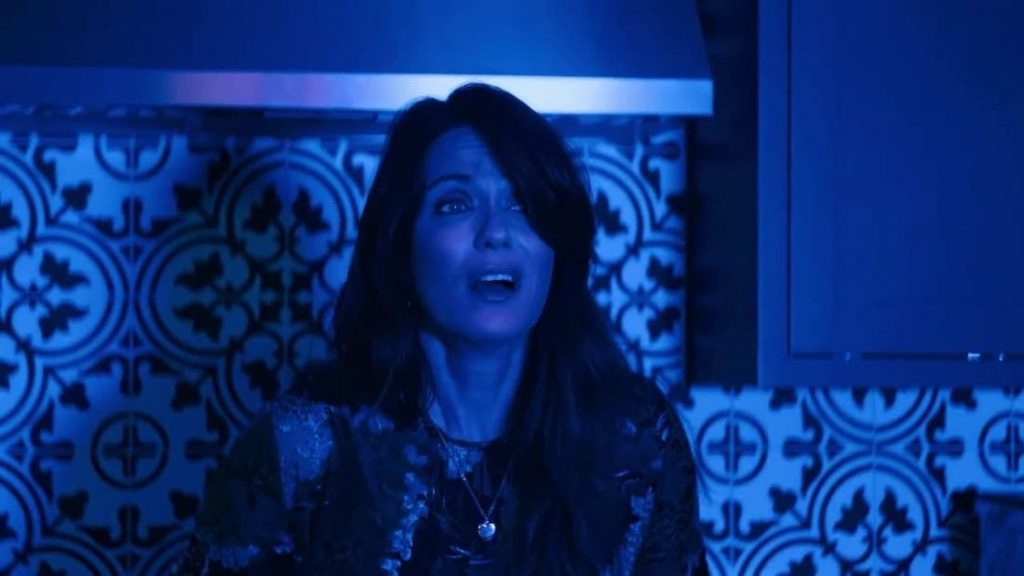
As with anxiety, to anyone not experiencing it, the fears can sound comical. To anyone going through it, it’s as serious as death. Seimetz takes both perspectives into account. She also considers another type of death: a kind of ego-death brought about by impending doom. Tilly (Jennifer Kim) and Brian (TV on the Radio’s Tunde Adebimpe) drop the relationship charades when the thoughts are spread to them by Jane. Tilly rotely tells Brian that she was waiting until after his father died to break up with him, he accepts this with little emotion. Seimetz suggests that total acceptance of one’s fears has to happen to live comfortably with them. It’s no good to deny them, they must instead be embraced.
The film, then, has a strange serenity about it. In knowing it’ll all be over soon, these people are able to purge and cleanse. Failings and regrets are admitted to, dune buggies rode in the night, pools swum in while fully clothed. Refusing to fight against the impossible is like exhaling after holding your breath for 30 years.
The film still vibrates with a dreadful tension, but it wisely doesn’t lead with it. It’s not hard to imagine a story like this twisted into a more genre-typical fare, with death positioned as a villain. Thankfully that is not the case; the big bad in She Dies Tomorrow isn’t death it’s our relationship to the concept of death. It’s our beliefs—that we are indestructible, immune from death, and infinite—that has to die tomorrow.
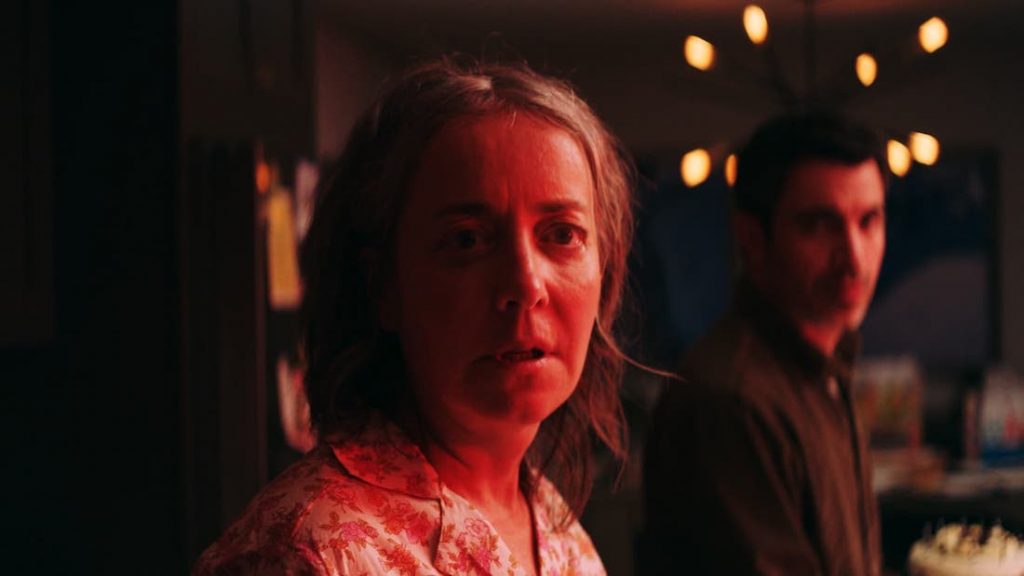
It fundamentally doesn’t matter what’ll happen to Amy or her friends, mortality wise. But Seimetz plays expertly with expectations. She first establishes a mystery, before successfully throwing us off wanting it answered. Finally, she reminds us that perhaps there will always be a part of us that wants that anxiety-quashing answer. We know we won’t get it, but that doesn’t stop us from wanting it. The ego that we clutch onto demands to know everything, and it is not dead yet.
It’s a balm for every tired article that promises to explain the ending of purposefully ambiguous films and TV shows. It’s a refusal to abate, in an era of storytelling that is quick to over-explain.
She Dies Tomorrow works in much the same way as the ‘disease’ works. It plants its seeds and waits for them to grow, and they will. One might find the film sprouting up when you’re trying to fall asleep. One might hear “Lacrimosa” distantly floating in the air, a sorrowful message coming to reveal an awful truth. And, much like the disease, it’s the sort of exciting filmmaking you want to pass along, and tell other people about. In this way, it’s an oddly refreshing film for our disconnected times. If we’re going to be horrified, at least we can all be horrified together.
USA | 2020 | 85 MINUTES | 1.78:1 | COLOUR | ENGLISH

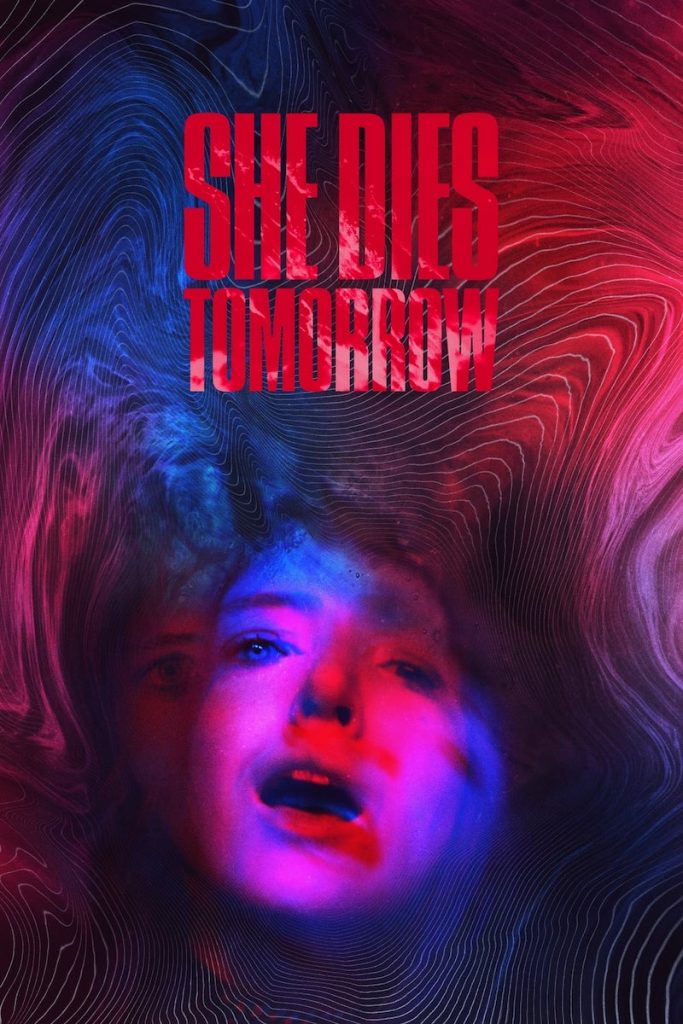
writer & director: Amy Seimetz.
starring: Kate Lyn Sheil, Jane Adams, Kentucker Audley, Katie Aselton, Chris Messina, Tunde Adebimpe, Jennifer Kim, Olivia Taylor Dudley, Michelle Rodriguez, Josh Lucas & Adam Wingard.
